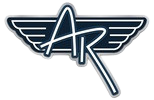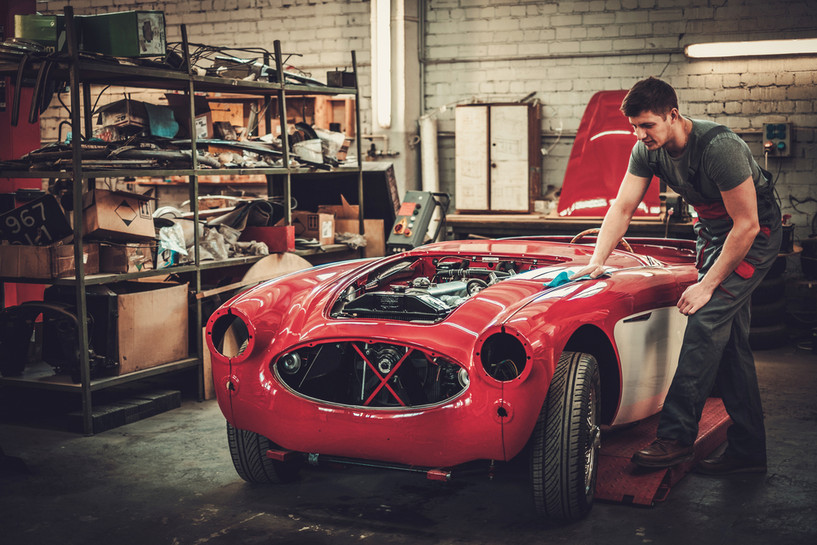If you've recently purchased a classic vehicle of any kind, or are in the market for one and hoping to purchase one soon, you may have some significant plans for restoration or upgrades to the vehicle once it's yours. For many in this position, taking some time to map out their upcoming plan of action can go a long way toward saving both time and money, plus achieving the ideal restoration you're looking for.
At Andersen Restoration Parts, we're thrilled to serve as your one-stop shop for all classic car restoration part needs, from suspension rebuild kits to idler arms, control arms, bumper sets and numerous other options at your disposal. What are some general tips we regularly offer clients on how to map out their approach for any kind of car restoration? Here are some simple areas to consider.
Choosing the Right Vehicle
Backing up all the way to the very start of this process, it's important that you carefully choose the right vehicle to restore in the first place. Not every vehicle is going to make for a good restoration project, and some will simply be too expensive or impractical to realistically take on. Do your research on what kind of classic car you're interested in pursuing, then ensure that it falls into a few key categories:
- Is the vehicle mechanically sound?
- What is the overall condition of the body and frame?
- What will be the cost of necessary parts and labor?
You can answer many of these questions by taking the car to a qualified mechanic for a thorough inspection, which will help you get a better sense of what kinds of repairs or upgrades will need to be made.
Review/Disassembly
Once you've gone through the process of purchasing and obtaining your classic car, the next step is to give it a thorough review from top to bottom. This will help you get a better sense of what needs to be repaired, replaced or upgraded, and will give you an opportunity to begin disassembling the vehicle if necessary.
Many times, a full restoration will require that you remove certain parts of the car in order to access others, so this is often the best time to begin that process. Be sure to carefully label and organize all removed parts, as you'll need them later on during the reassembly process.
Determine Your Goals
As you go through the review/disassembly process, it's also important that you take some time to determine your overall goals for the restoration. Are you looking to simply repair any damage and get the car running smoothly again? Or are you planning on making significant upgrades, such as a new engine or transmission?
The more specific you can be with your goals at this stage, the better, as it will help you make more informed decisions later on. We often recommend taking detailed notes on your disassembly -- this will allow you to refer back to them later, and will help keep you organized as you move forward.
Set a Budget
Restoring a classic car can be an expensive endeavor, so it's important that you set a budget early on and do your best to stick to it. Keep in mind that unexpected repairs or issues may come up during the process, so it's always a good idea to leave some wiggle room in your budget just in case.
Once you have a better sense of the parts and labor that will be required for your restoration, you can begin to get more specific with your budget. This will help ensure that you don't overspend, and will give you a better idea of what kind of timeline you're working with.
Prioritize Your Repairs/Upgrades
Once you have a budget in place, it's time to start prioritizing your repairs and upgrades. Not every repair or upgrade will be equally important, so it's important to determine which ones should take precedence. In general, we recommend focusing on any repairs that are necessary for the safety of the vehicle first, followed by cosmetic repairs or upgrades.
Of course, the repairs and upgrades that you prioritize will ultimately be up to you -- just be sure to keep your budget and goals in mind as you make your decisions.
Create a Timeline
Finally, once you've gone through all of the above steps, it's time to create a timeline for your restoration. This will help you stay on track and ensure that you don't fall behind schedule, which could end up costing you more money in the long run.
Again, be sure to take your budget into account as you create your timeline -- certain repairs or upgrades may take longer (and cost more) than others, so you'll need to factor that in.
Be Flexible
Now, while it's important to have a timeline and budget in place, it's also important to be flexible with both. As we mentioned before, unexpected repairs or issues can come up during a restoration, so it's always a good idea to leave some extra time (and money) in your budget just in case.
In fact, for many people, the fact that you don't always know what will come next is actually a very attractive part of owning a classic car. So, while it's important to be organized and have a plan in place, don't forget to enjoy the process as well!
For more on this, or to learn about any of our classic car restoration parts or services, speak to our team at Andersen Restoration Parts today.

